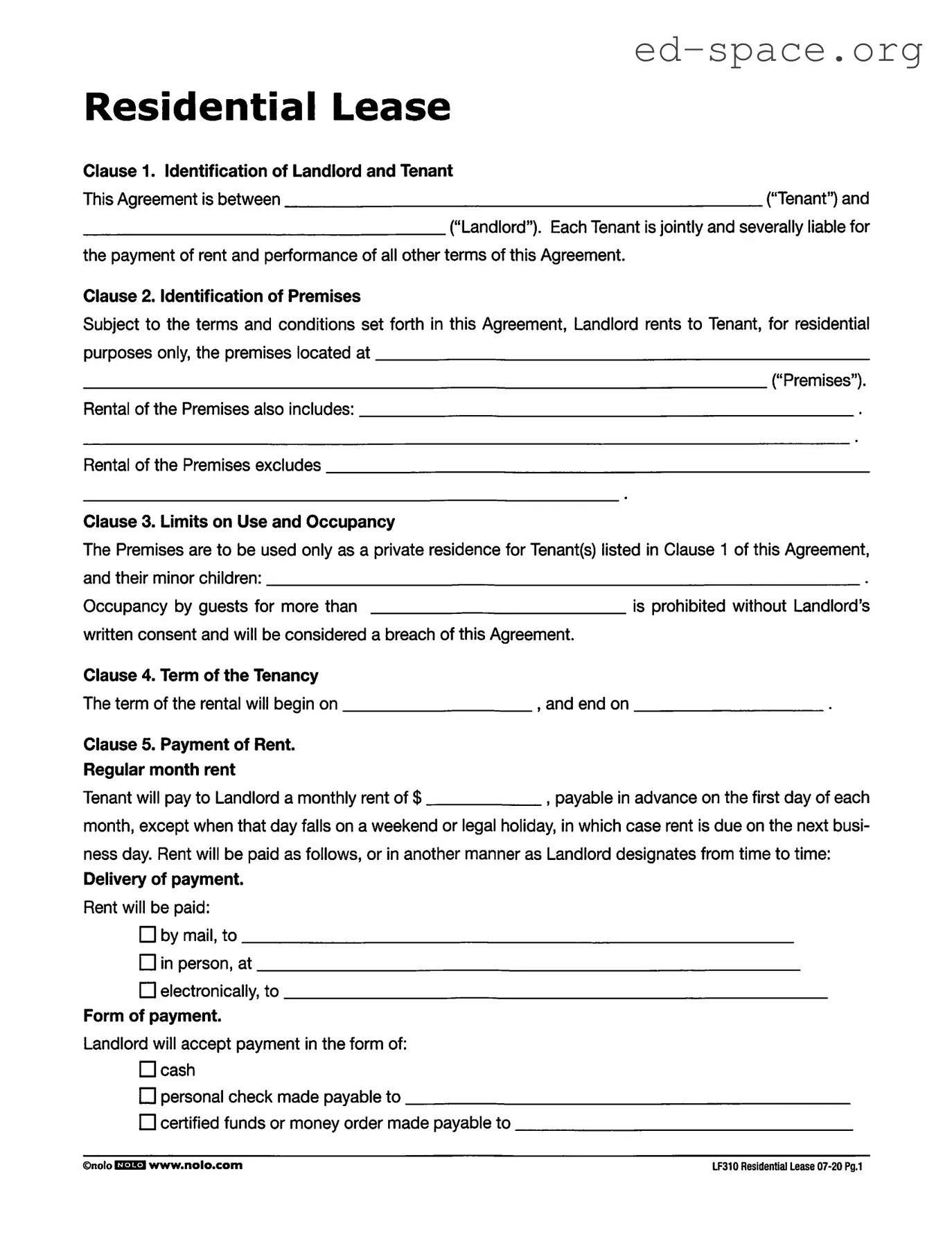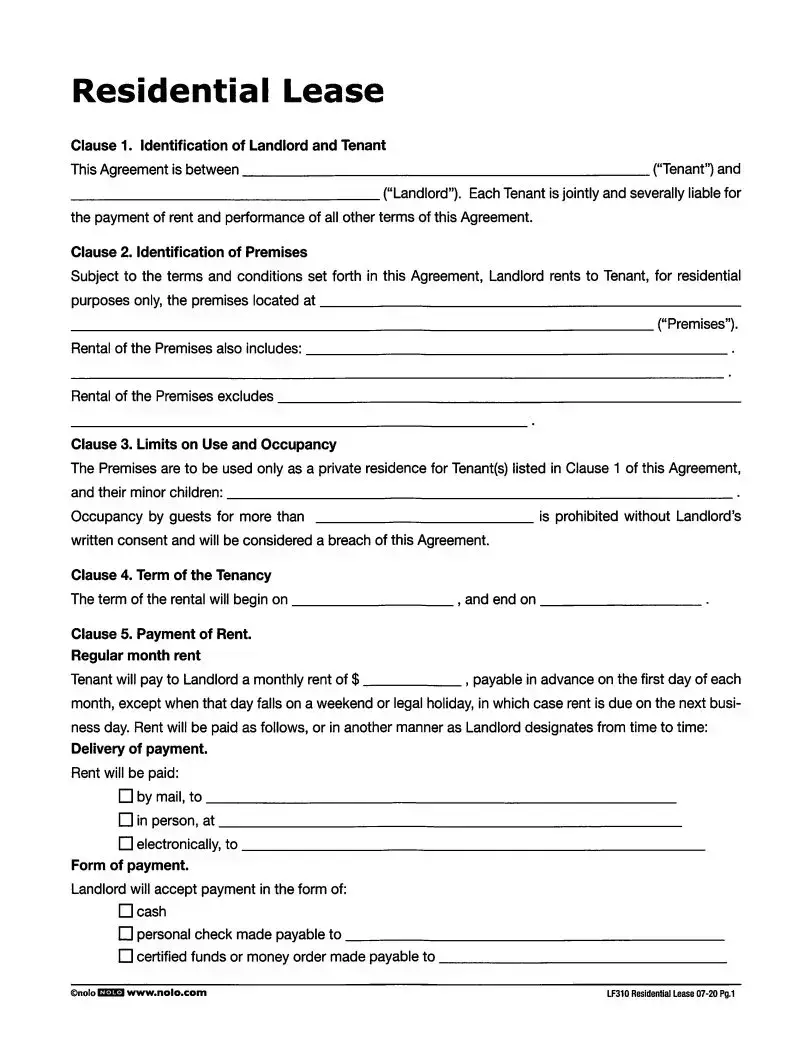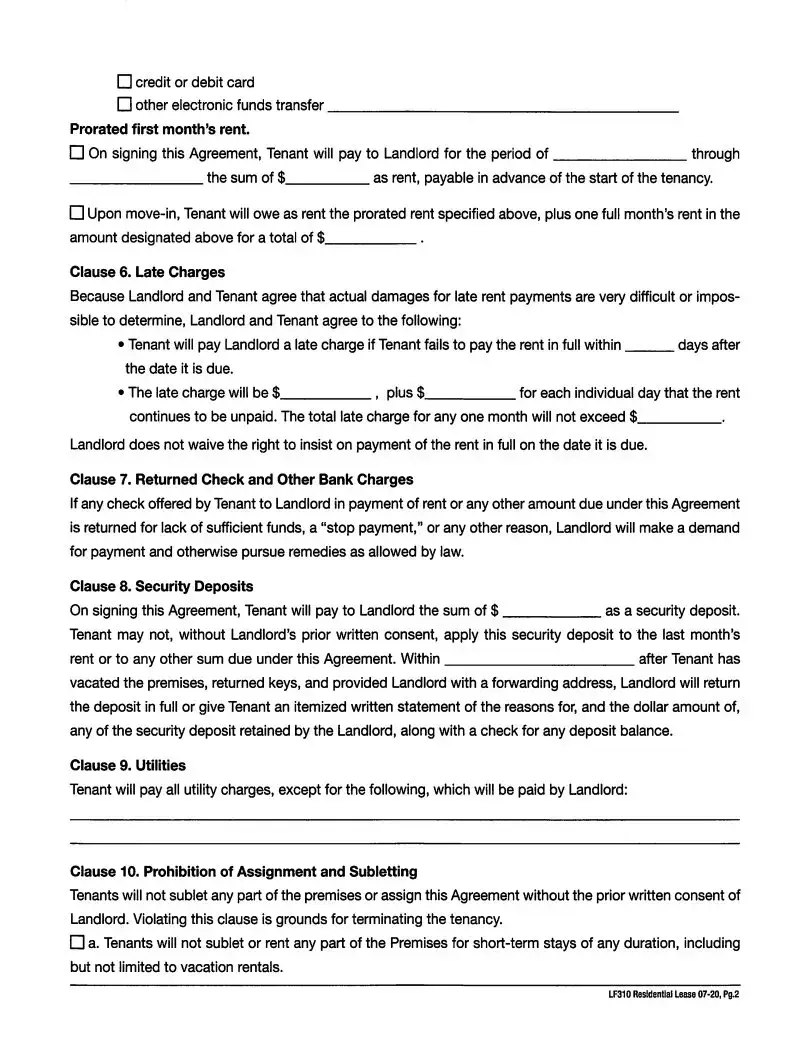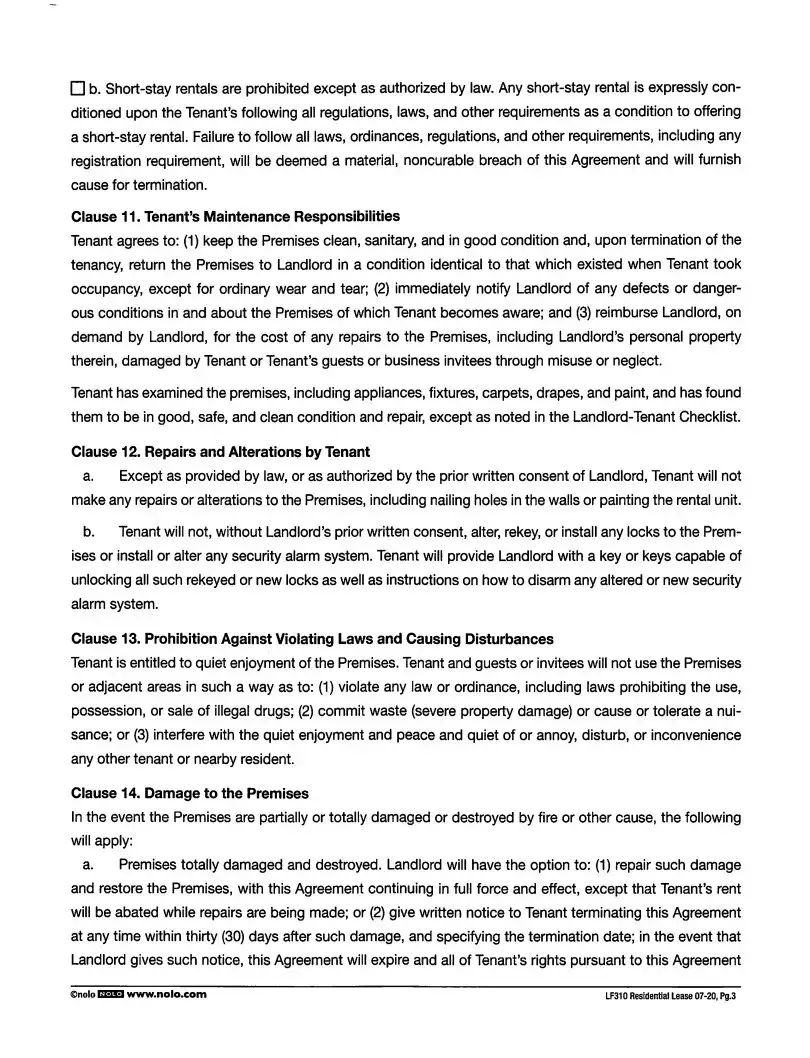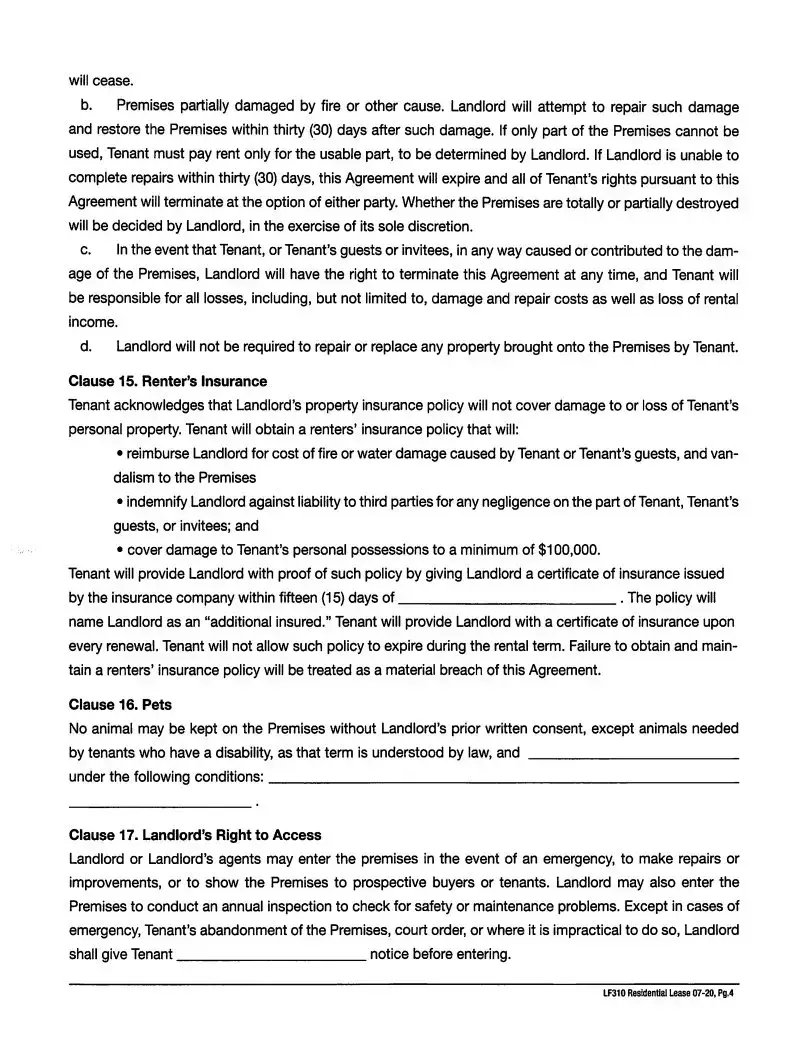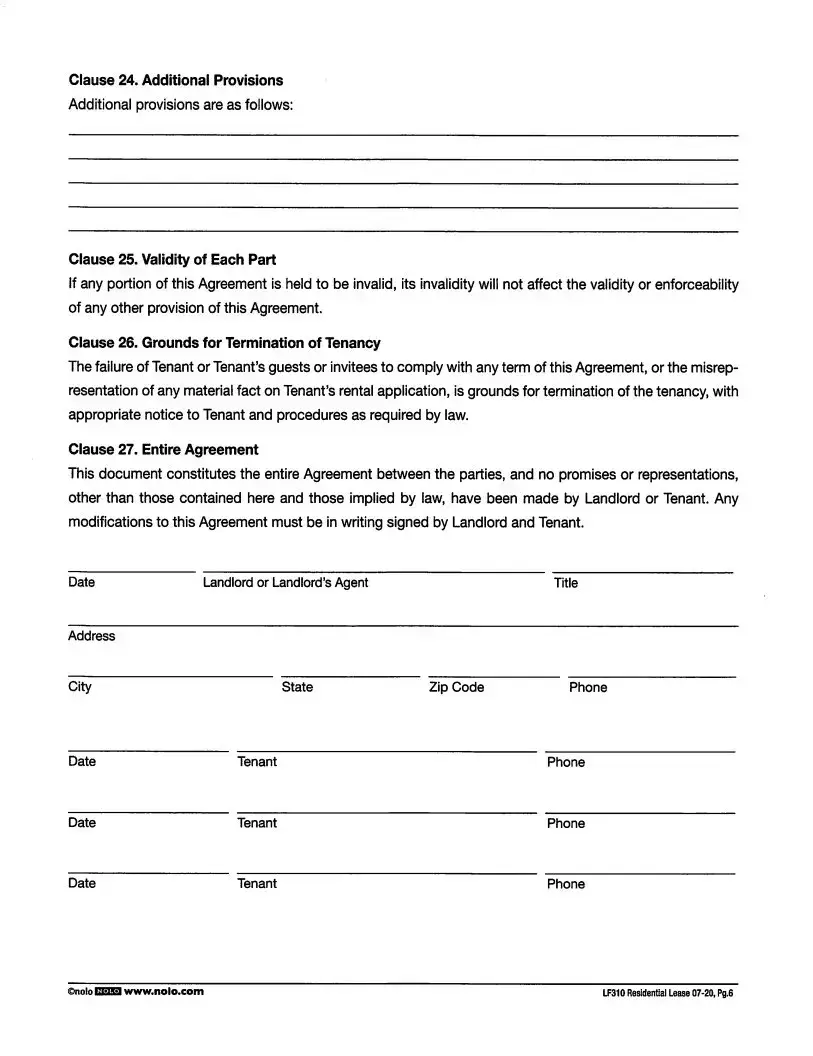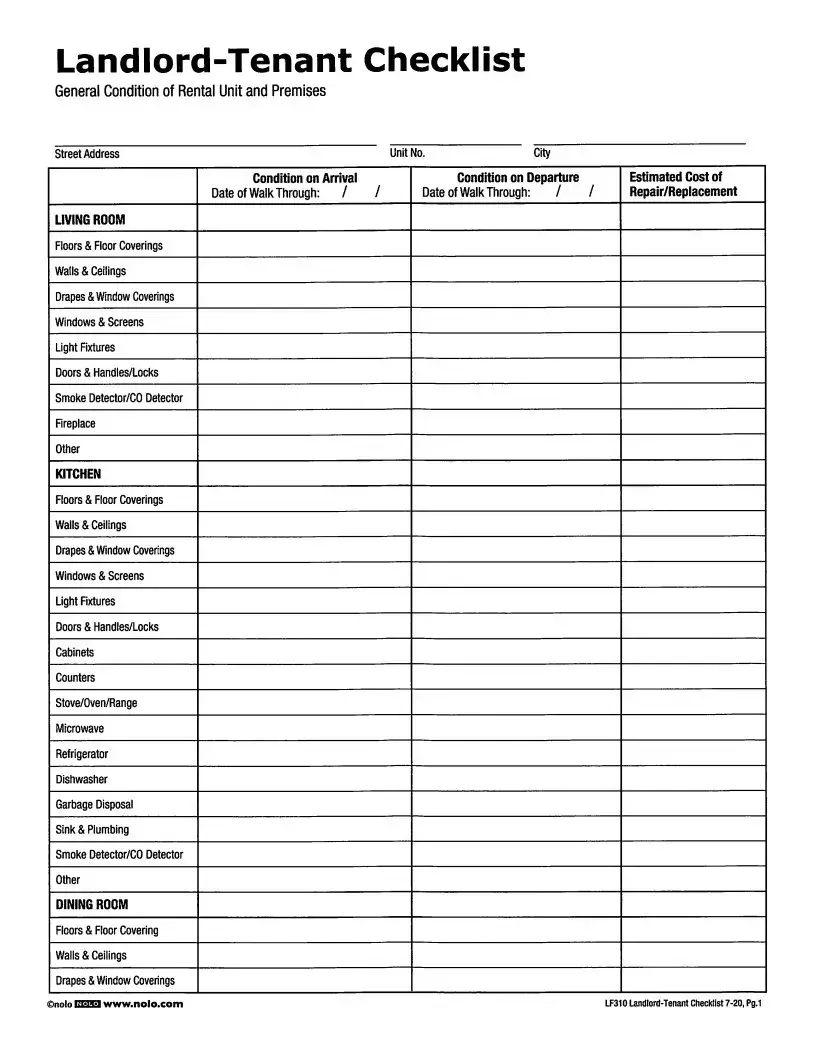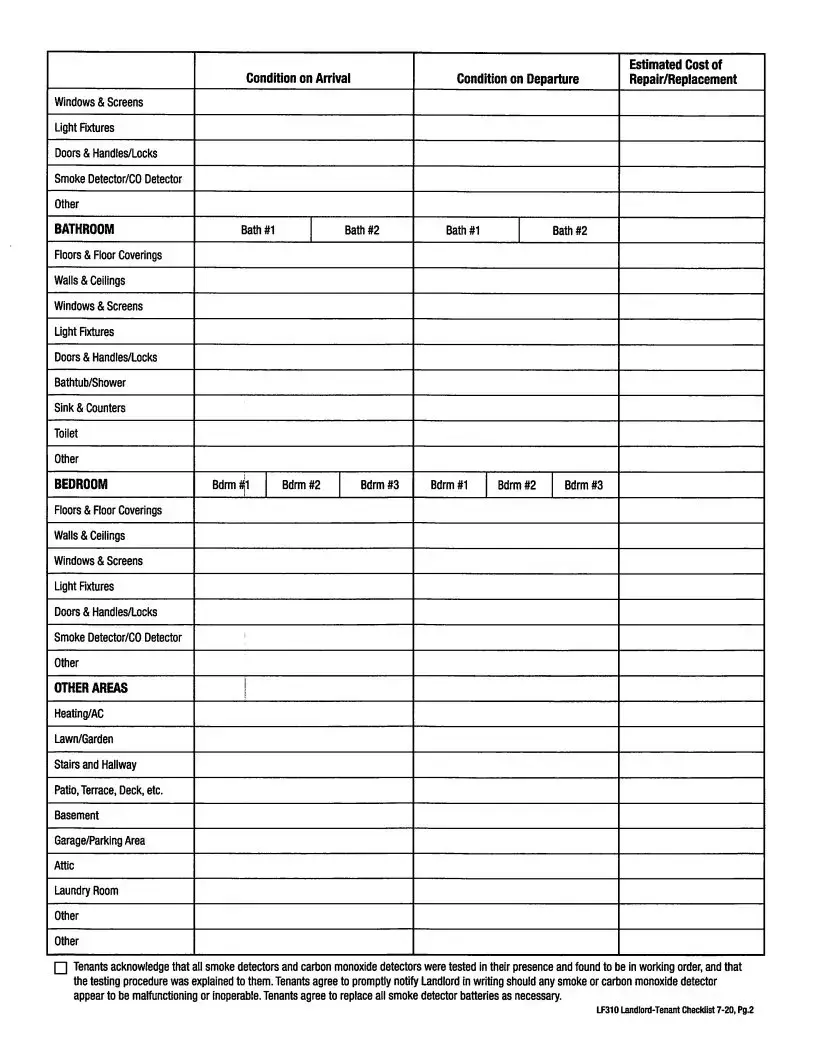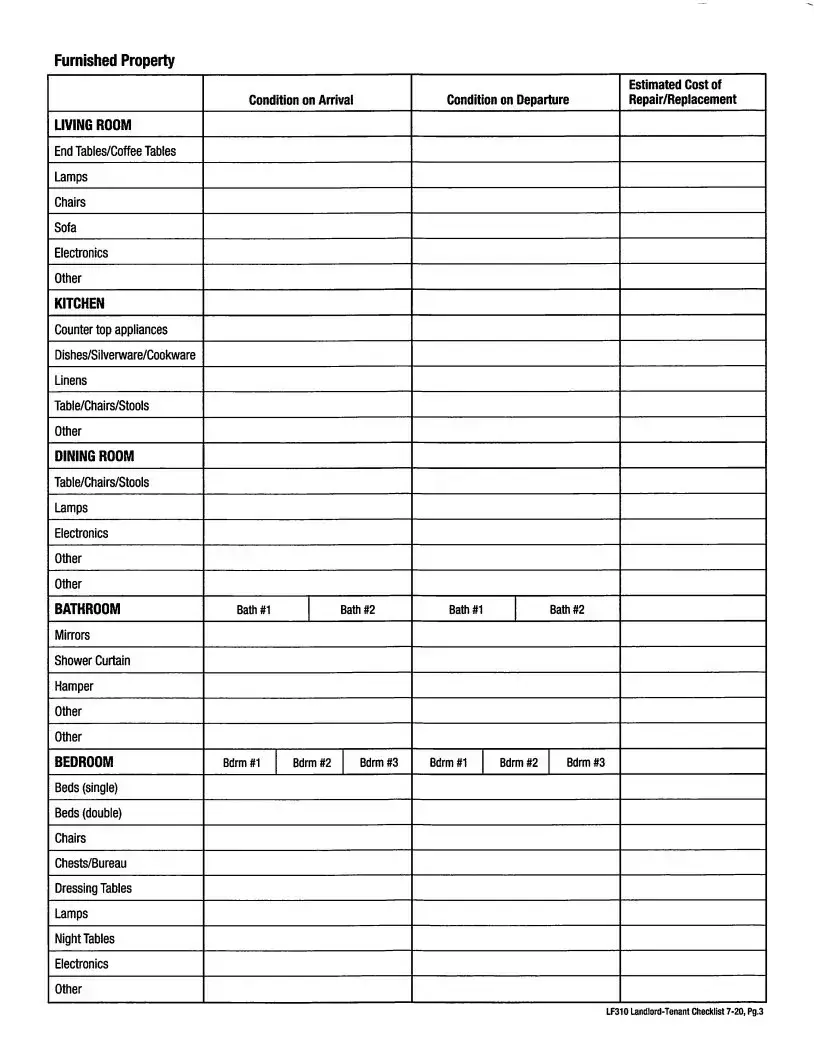What is the LF310 Residential Lease?
The LF310 Residential Lease is a legal document used for the arrangement between a landlord and a tenant when renting residential property. This form outlines the terms and conditions of the lease, such as the identification of both parties, the premises details, the lease term, payment schedules, and responsibilities regarding utilities, security deposits, late charges, and prohibitions on subletting and assignment.
How does joint and several liability work according to the LF310?
Under the LF310 Residential Lease, each tenant named in the lease is jointly and severally liable for the entire amount of rent and the performance of all other terms of the agreement. This means that the landlord can demand the full amount of rent from any one of the tenants, and each tenant is responsible for the actions of the other tenants in fulfilling the lease terms.
What are the occupancy restrictions stated in the LF310 Residential Lease?
The LF310 limits occupancy to only the tenant(s) listed in Clause 1 and their minor children. It restricts occupancy by guests for more than a specified period without the landlord’s written consent, considering such an act a breach of the agreement. This clause is designed to prevent unauthorized residents and ensure the property is used solely for residential purposes.
How is rent to be paid according to this lease agreement?
Rent is payable monthly in advance on the first day of each month, with provisions for payment on the next business day if the first falls on a weekend or legal holiday. Tenants have several options for rent payment as designated by the landlord, including mail, in person, electronically, and through various forms of payment such as cash, personal or certified check, money order, credit/debit card, or other electronic funds transfer systems. The agreement also details the initial payment including prorated rent upon signing.
What consequences are specified for late rent payments?
The LF310 Residential Lease outlines specific late charges if rent is not paid in full within a designated number of days after it's due. It includes a base late fee plus an additional daily charge until the rent is paid, though the total late charge for any one month is capped. This clause underscores the importance of timely rent payment and establishes preset penalties to avoid confusion or legal disputes over late payments.
Can a tenant use the security deposit as the last month's rent?
Tenants are not allowed to apply the security deposit towards the last month's rent or any other amounts due under the lease without the landlord's prior written consent. The security deposit must be used in accordance with the terms outlined in the agreement, primarily as a safeguard against damage to the premises or breach of the lease. The landlord is required to return the deposit or provide an itemized statement of deductions along with any remaining balance within a specified period after the tenant vacates the property.
